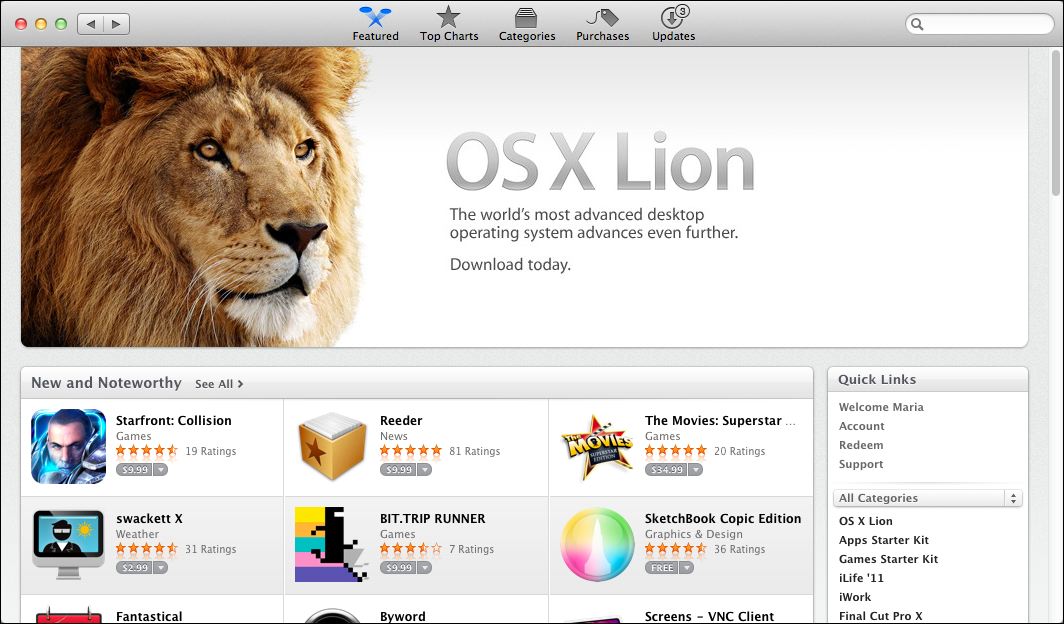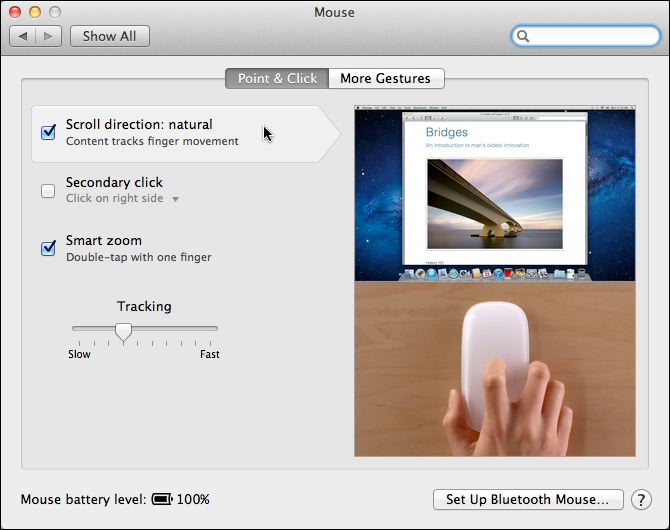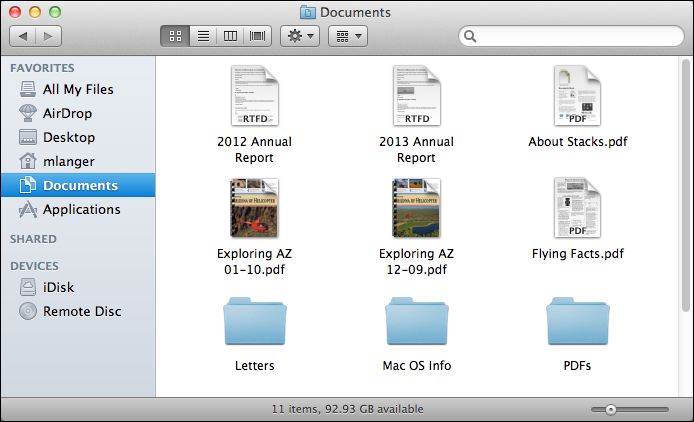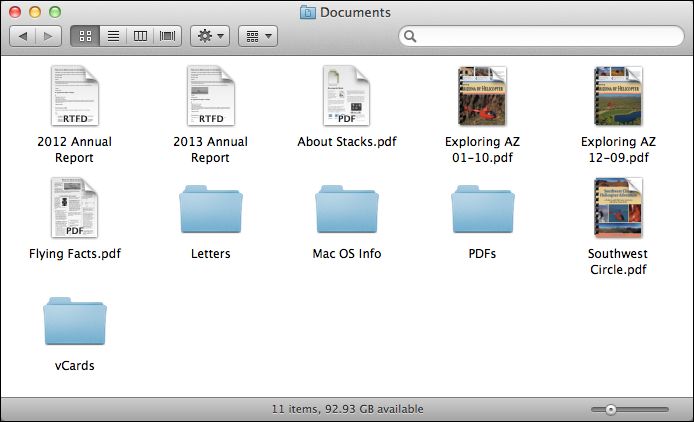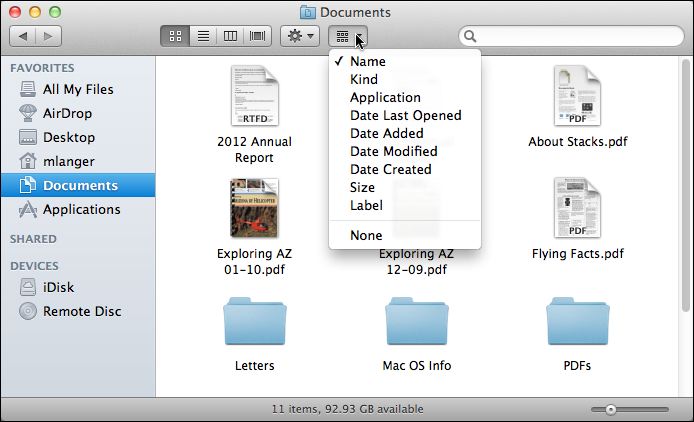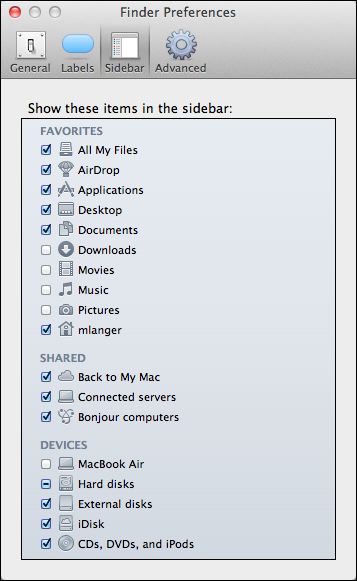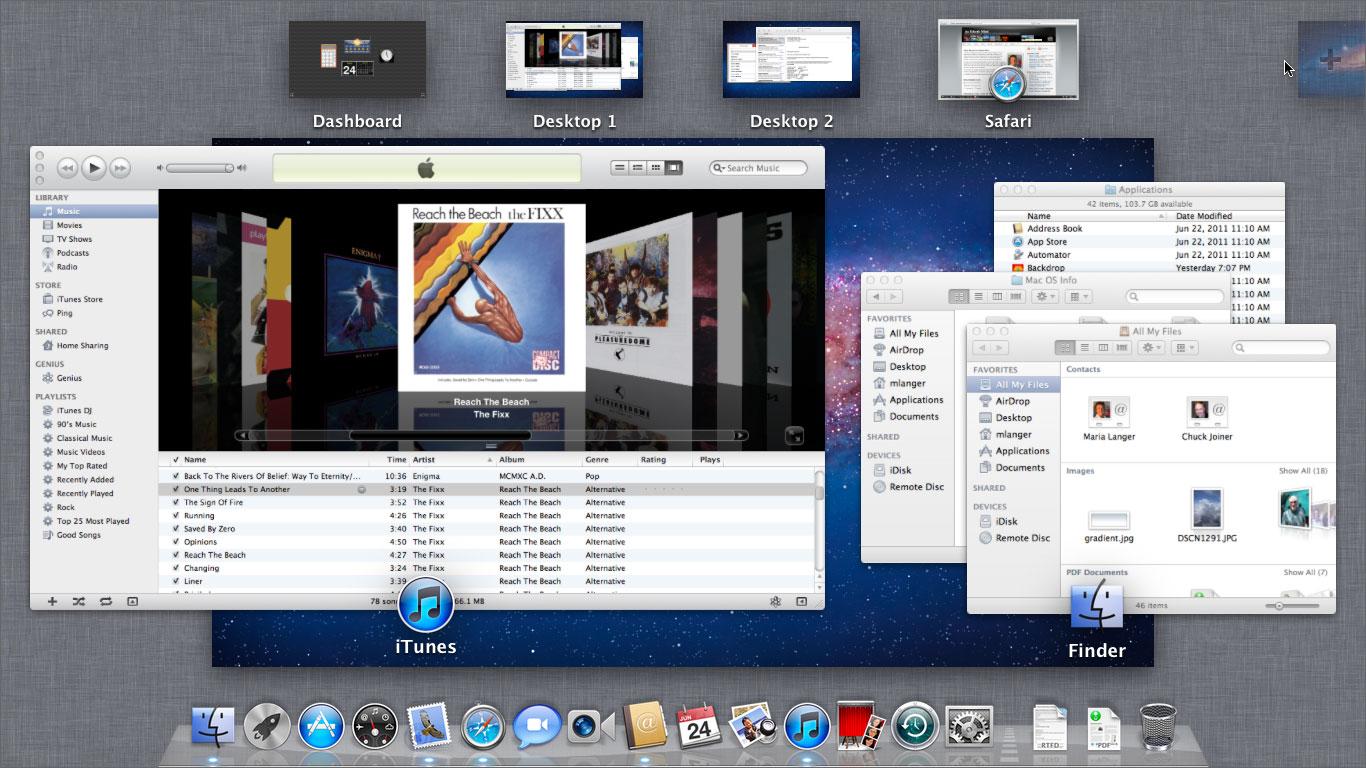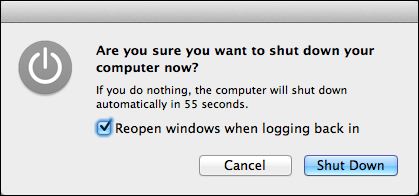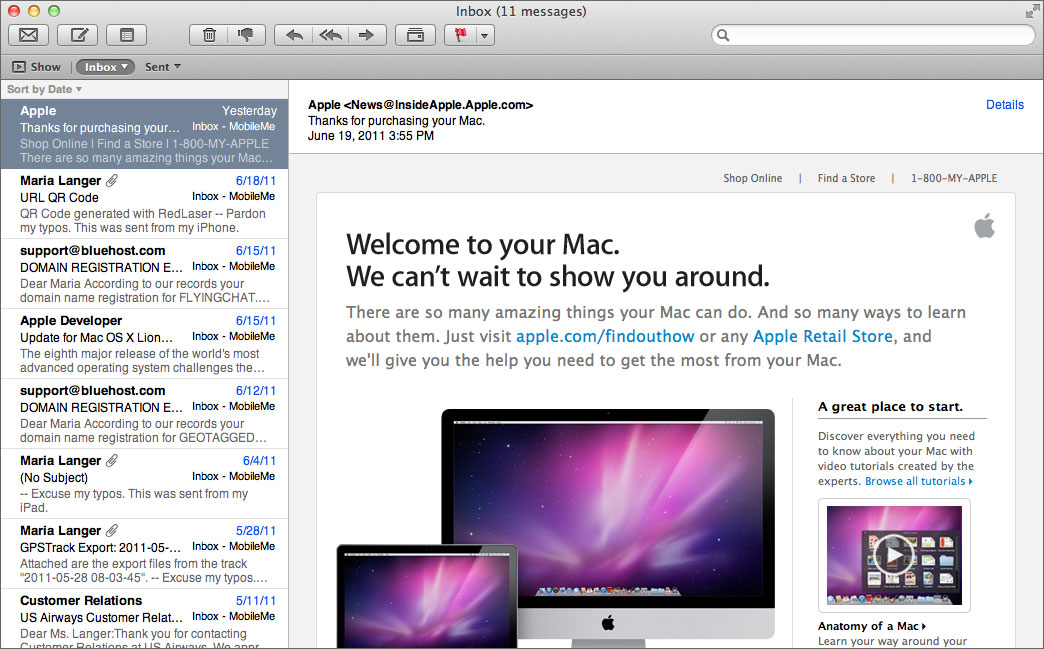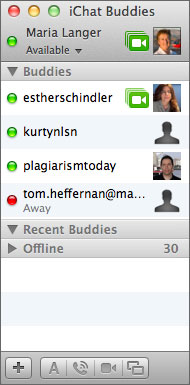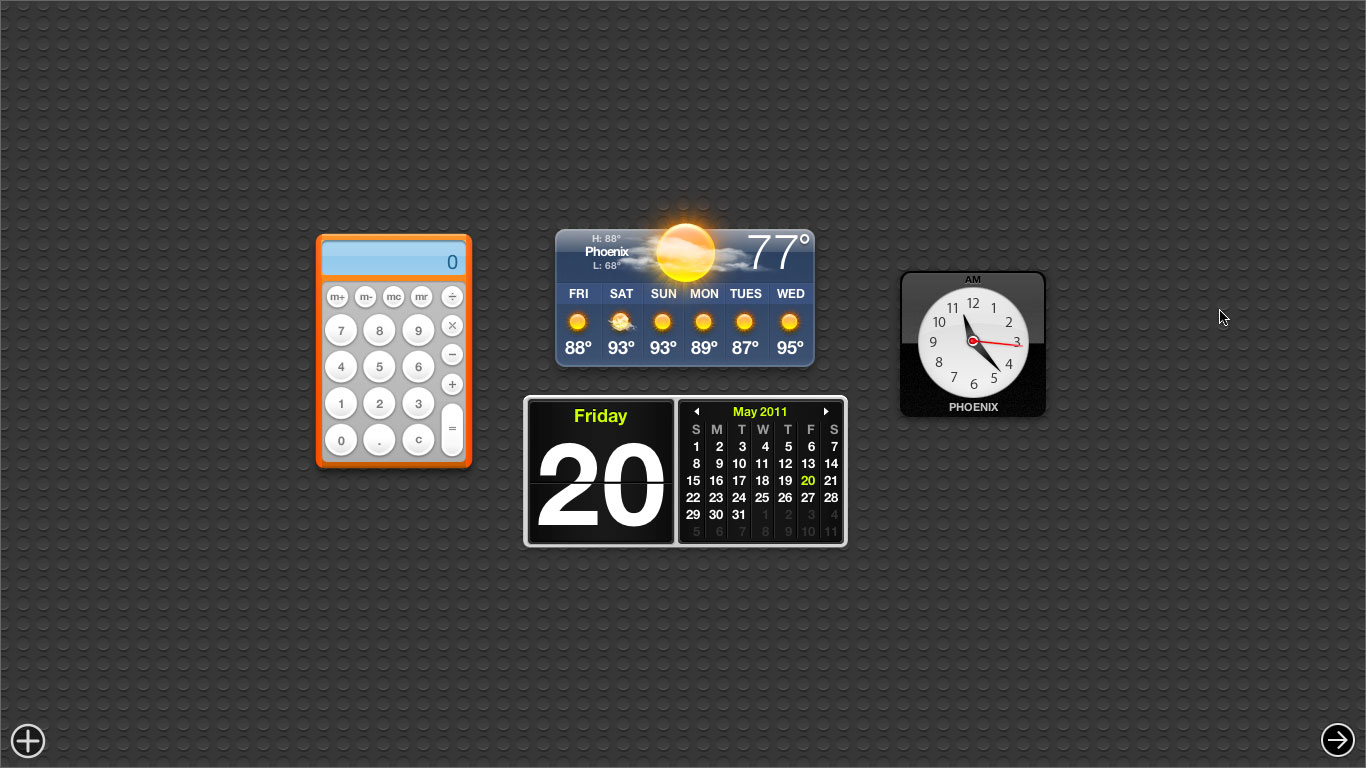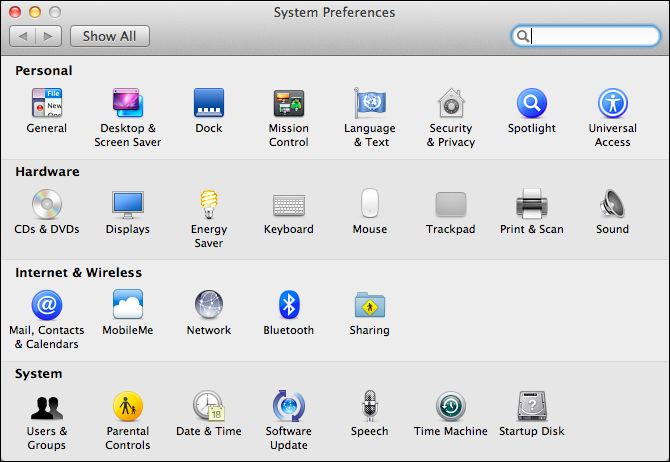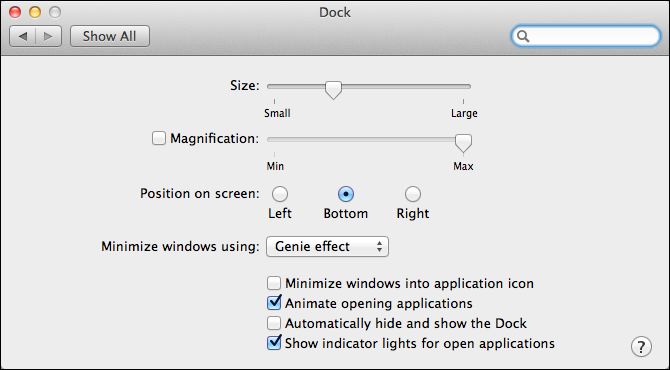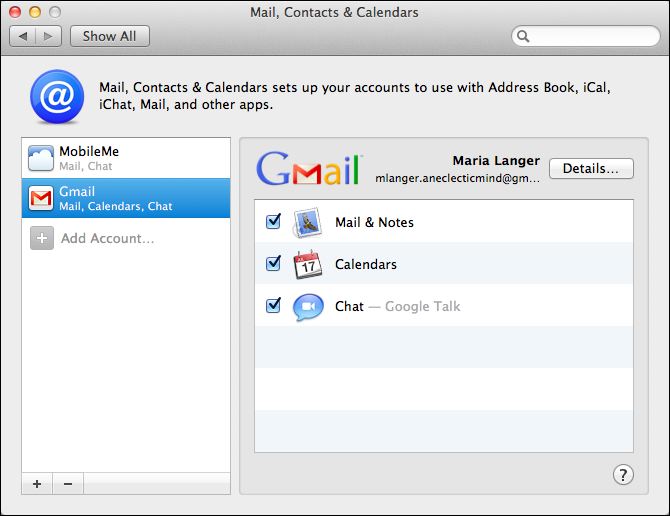Ten Lion Tips for Snow Leopard Users
One of the things that struck me as I was working on my latest book, Mac OS X Lion: Visual QuickStart Guide for Peachpit Press is how many little changes there are from Snow Leopard to Lion. I’m talking about the kinds of changes that a Snow Leopard user might notice right away — the changes that might have you scratching your head, wondering what’s going on.
That’s what this article covers. Rather than concentrating on the big new features, as most Lion-related articles do, I’ll cover ten smaller changes, in an effort to help Mac OS X Snow Leopard users make the jump to Lion.
Keep in mind that this article is brief on purpose. If you’ve been using Mac OS for a long time, it’ll probably provide you with enough information to deal with the changes. But if you’re relatively new to Mac OS, you may want to dig deeper; if so, I hope you’ll check out my Lion videos and book to get the additional information you need.
Electronic Distribution
One of the biggest changes in Lion is simply the way Lion is sold and distributed. You can’t go to an Apple Retail Store or Online store to buy a disc. Instead, you need to use the App Store. That means you’ll need a few things just to buy and install Lion:
- A Mac running Snow Leopard 10.6.7 or later. If you haven’t updated to the latest version of Mac OS, do it now. Just run Software Update by choosing Software Update from the Apple menu and install the updates it finds. If the App Store application is not already installed, it’s installed automatically with the current Snow Leopard update.
- An Apple ID for an App Store Account. If you don’t have an Apple ID, you can get one pretty easily. Open the App Store Application and choose Create Account from the Store menu. Then follow the onscreen prompts to set up an account. You will need a valid credit card number to complete the setup.
- An Internet connection. You’ll be downloading Lion from the Internet, so you’ll need to have a good connection. The Lion installer is big — nearly 4 GB — so you’ll want the fastest connection you can get.
Once the download is complete, you’ll be prompted through the installation process. There isn’t much to it. Just click a few buttons and you’re done.
I do want to point out that Apple claims it will sell Lion on a USB thumb drive sometime later this year. If your only connection to the Internet is as painfully slow as mine, you may want to wait and pay a few extra bucks to get Lion that way.
Natural Scrolling
If you use a multi-touch device such as a trackpad or magic mouse with your Mac, you may be surprised by a sneaky change to the way it works. In Lion, scroll direction can now be changed. Not only that, but it’s set to the opposite direction than it’s set to in Snow Leopard.
What does this mean? Well, when scrolling with gestures, you now swipe down to move content down — just as you might on an iOS touchscreen. This is referred to as natural scrolling — and, if you think about it, it is. You’re using the trackpad to push content in a window in one direction or another. That’s pretty natural.
Of course, this might drive you crazy — at least at first. So you can change it.
- For a trackpad, go to the Trackpad Preferences pane and turn off the check box for the Scroll Direction option in the Scroll & Zoom pane.
- For a Magic Mouse, go to the Mouse preferences pane and turn off the check box for the Scroll Direction option in the Point & Click pane.
Personally, I recommend embracing the change and getting used to it. It really will seem natural after a while — especially if you have an iOS device that already scrolls like this.
All My Files
In OS X Lion, when you open a new Finder window, it automatically opens the new All My Files window. This is Apple’s attempt to put all your data files in one place.
There are a few interesting under-the-hood details about this window:
- All My Files is actually a smart folder created with search criteria.
- All My Files takes full advantage of the grouping feature that’s now part of view arrangement options.
- You can scroll left or right in any group to see icons that aren’t showing.
Of course, you’re not stuck with this window if you don’t want to see it. You can change the default new window to something you’re more familiar with, like your Home folder or Documents folder. You do this in the General pane of Finder Preferences. Just select a new option from the New Finder Window opens pop-up menu and you’re good to go.
Finder Windows
You should also notice some changes in Finder windows.
- The resize button in the lower-right corner of the window is gone. In OS X Lion, you can now resize a window by dragging any of its edges or corners. That’s a seriously welcome change.
- Scroll bars have a whole new look. In fact, if you’re using a Multi-touch device such as a Trackpad or Magic Mouse, you may not see the scroll bars very often at all. If this bothers you and you always want to see scroll bars, you can set an option in the General preferences pane to always display them. And if you like scrolling by clicking scroll arrows, well, you’re out of luck. Those arrows are gone, probably for good.
- The toolbar control button is gone. Now, if you want to hide or display the toolbar, you’ll need to use a View menu command or shortcut key.
- The toolbar and Sidebar are no longer always paired. While it’s true that you must show the Toolbar to see the Sidebar, you can now see the Toolbar without the Sidebar. There’s a separate command and shortcut key to show or hide the sidebar.
- The toolbar now includes an Arrange By pop-up menu. And, if you try some of the options, you’ll see that they also automatically group items in the window. Grouping is brand new in Lion.
- The sidebar has been rearranged, reformatted, and redesigned. Instead of disclosure triangles, you point to a heading to display a hide or show button to hide or show items within it.
- The default items listed in the sidebar have also changed. If you don’t like what appears there, you can use the Sidebar pane in Finder preferences to specify exactly what you want to see. And, of course, you can still add and remove your own items it as you could in Snow Leopard.
Invisible Library Folder
If you’re the kind of user who likes to roll up your sleeves and dig into the workings of Mac OS, you may be surprised to find that the Library folder in your System folder is gone. It’s still there and still contains all the secret files that make Mac OS work the way you’ve set it up to, but now it’s invisible. Apple likely made this change to prevent users who aren’t quite as tech savvy as you from deleting or moving files they really shouldn’t touch.
Fortunately, you can still get into this folder to wreak havoc if you need to. In the Finder, hold down the option key and display the Go menu. You’ll see a Library command appear automagically. Choose that command and you’re in.
Exposé & Spaces Rolled into Mission Control
In OS X Lion, Apple rolled the Exposé and Spaces features into one interface feature called Mission Control. So while Mission Control is brand new in Lion, it really contains two familiar features that we had in Snow Leopard.
You can get into Mission control by pressing the Control-Up Arrow or swiping up on a Multi-Touch Device with three fingers. It might look something like this. Along the top are your spaces, including Dashboard, which now is a separate space, any Desktop spaces you might have created, and any full-screen app windows that might be open. The big area shows each of the applications open in that space, with their windows grouped together so they’re easy to see.
To switch from one space to another, you can press Control-Right Arrow or Control-Left Arrow or swipe left or right with three fingers.
To leave Mission Control, you can press Control-Down Arrow or swipe down with three fingers. Whatever space is displayed when you leave mission control is the space that will fill your screen.
I should also mention here that you can use the control-Arrow Key and three-finger swipe techniques to move from one space to another without even opening Mission Control. That makes it really quick and easy to navigate among spaces and full-screen apps.
You set up spaces differently now, too. But that’s a bit more involved than I can cover in this article.
Auto Save & Versions
Auto Save is brand new in Lion. Although it isn’t supported by all applications yet, support will grow with time.
Auto Save does just what the name implies — it saves your documents automatically while you work. It does this periodically and when you perform certain actions, including quitting the application. As a Snow Leopard user, you might find it a bit disconcerting that the App doesn’t even prompt you to save a file that has been changed when you quit.
Theoretically, in applications that support Auto Save, you don’t need to use the Save command at all — the application will save your document even if you haven’t bothered to give it name by saving it yourself. I don’t recommend that, though. Any document you plan to work with again in the future should be saved manually at least once to create file for the document on disk.
Auto Save makes the new Versions feature possible. Versions keeps track of the changes recorded for a file through automatic and manual saving. Then, if you want to revert to a previous version, you can use the Browse All Versions feature to find the one you want and restore it.
Resume
One new Lion feature that can really take Snow Leopard users by surprise is the Resume feature. Why? Well, it’s likely to open a lot of documents and applications that you didn’t expect to see open.
Resume has two levels of functionality.
- On the application level, when you quit an application, the Resume feature notes which documents were open. Then, the next time you open the application, those same documents reopen automatically.
- On the system level, when you log out, restart, or shut down you computer, the Resume feature notes which applications were open. Then, the next time you log in, those same applications reopen automatically.
While there is a check box you can toggle when you shut down to prevent applications from automatically reopening, there’s no such option when you quit an application. The only way to prevent a document from reopening when the application opens is to close the document before quitting. You might want to keep this in mind if you often view private documents on your computer.
Updated Applications
A bunch of Mac OS applications have also been updated for Lion. Some of them have a whole new look that’s considerably different from the way they looked in Snow Leopard.
- Mail’s new look is more streamlined, offers a customizable Favorites bar, and includes a conversation feature. It also supports the new Full-Screen apps feature, which seems to make it even more pleasant to use.
- Address Book’s revised interface makes it easier to work with contacts and groups, as well as to share contact information by emailing vCards.
- iCal’s new look makes it more attractive and gives it a cleaner interface for working with calendar events. Its reworked Day view shows your day’s events in context with upcoming items on your calendar. And the Year view shows you just how busy each day is with a heat map that color-codes based on the number of activities. iCal supports the Full-screen apps feature, too.
- Safari, which is a full-screen app, has a new Reading List feature for saving Web content so you can read it later. Its Reader feature removes distracting advertising and combines multiple page documents into one scrolling window.
- iChat now has just one unified buddy list, making it a lot easier to see who’s available for chat.
- Dashboard is now its own space, sporting a textured background.
System Preferences Changes
You may also notice some changes in the System Preferences window.
- The Appearance has been renamed General.
- Dock now has an option to control the display of the blue bullets beneath open applications in the Dock.
- Exposé & Spaces has been replaced by Mission Control.
- The keystroke to invoke Exposé’s application windows feature has changed from F10 to Control-Down Arrow.
- The Security Preferences pane now offers privacy options.
- The New Mail, Contacts, & Calendars preferences pane offers an easy way to add accounts to your Mac for use with Mail, Address Book, iCal, and iChat.
- The Accounts preferences pane is now called Users & Groups.
Conclusion
So those are ten things every Snow Leopard user should know about Lion. But as I’m sure you know, that’s not all there is to know about Lion.
Lion is a great new version of Mac OS, one with plenty of new features and interface changes to help make you more productive. I dug deeply into Lion while working on my book and was very happy with what I found. I’m excited about Lion and thrilled to be using it on my Macs. I think you’ll feel the same way!
About the Author
Maria Langer is a freelance writer who has been writing about Mac OS since 1991. She is the author of Peachpit’s bestselling Mac OS X Lion: Visual QuickStart Guide. Visit her on the Web at http://www.MariaLanger.com.
